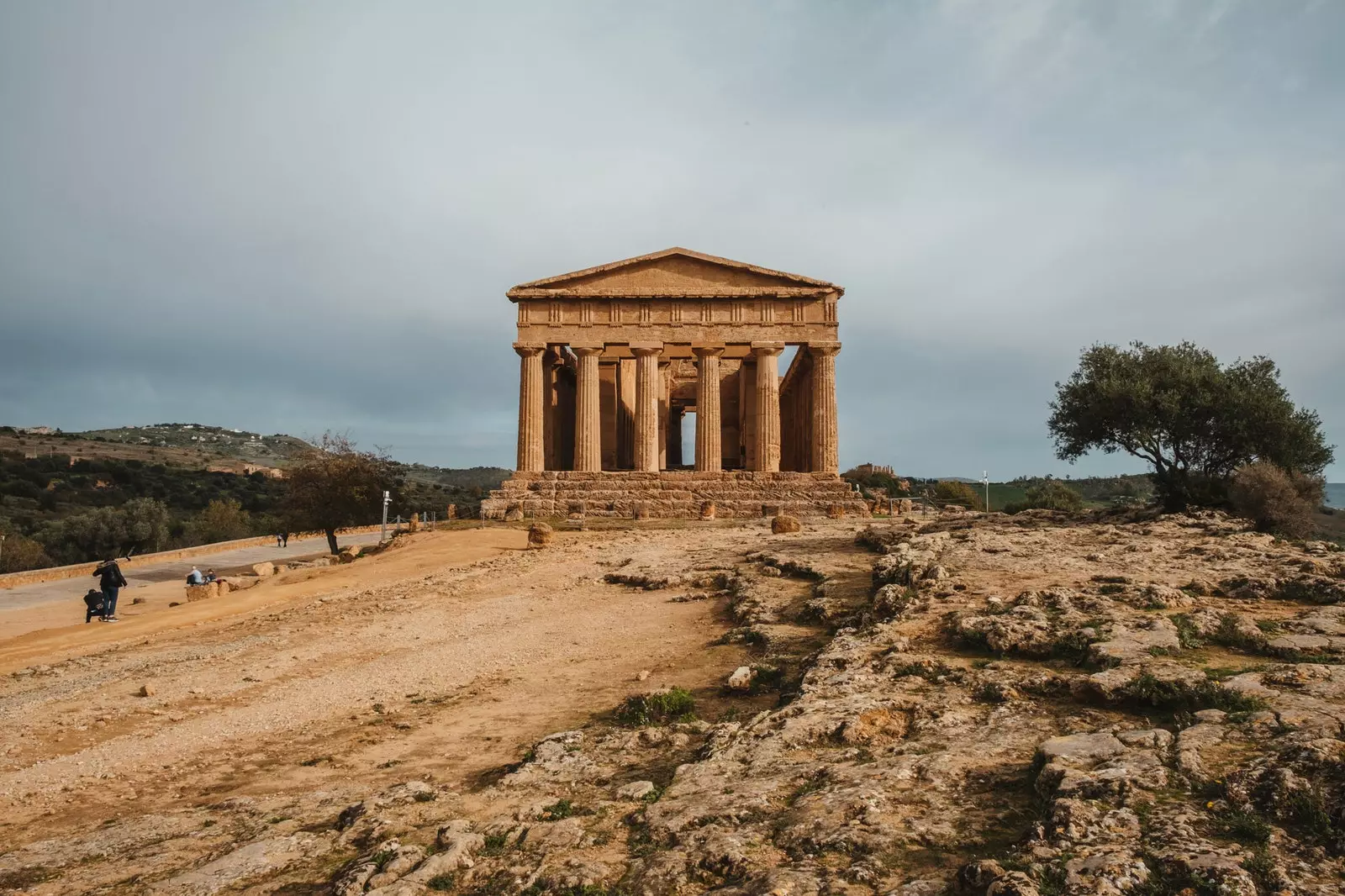
The Valley of the Temples: a place where the past still breathes between the stones
The three-masted sailboat that transported us from Palma de Mallorca swayed to the sound of the waves, pushed by the Poniente wind. Three dolphins jumped out, and behind them, the ocher cliffs of Sicily, a land still magical, tragic and full of comedy; the island itself is an opera that can only be written in the far south of Italy.
I asked the captain what was the ideal place to disembark, and pointing to the horizon, he replied: “the Turkish staircase”. The cliffs began to grow in front of the sailboat, but one of them, the one pointed out by the captain, drew attention to the rest.
The Sicilian stone was white as snow there, and it blinded us like a shipwrecked man desperately clutching the mirror that will save him. There were no tourists bathing, and the beach bar was closed, which is logical in the middle of January. That's why, Nobody noticed how the sailboat meekly dropped anchor in a small cove, also made of white stone, which opened next to such a curious stone “staircase”.
“Do you know why they call it the Scala dei Turchi (Turks, in Italian)”? the captain asked me as we climbed the white steps. “Here the Saracen pirates landed to devastate Sicily, and silently plunge Agrigento”.
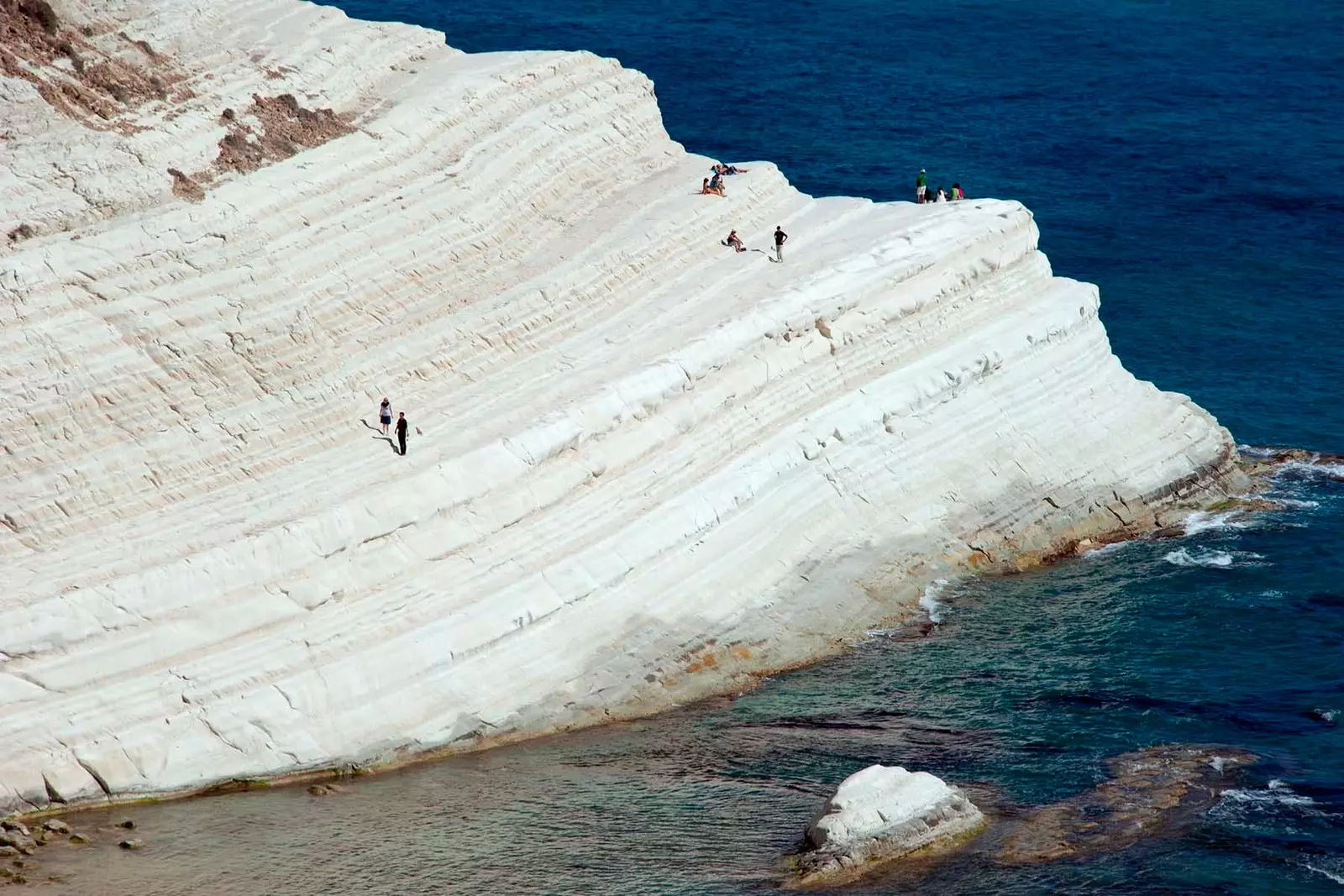
Scala dei Turchi, a sidereal landscape
We traveled along a rugged coastline, dotted with thyme and populated by hundreds of rabbits. In the distance you could sense the life of the towns, and the road purred behind us, betraying the traffic. We entered a sea of olive trees, and the horns stopped as we disappeared into the trees.
Suddenly, on a hill, silhouetted against a distant city of brown houses and sober bell towers, four marble columns stood out. “That is the temple of Castor and Pollux!” someone exclaimed , and the columns themselves, with their broken frieze like a comical bowler hat, seemed to bow to the visitors. “Welcome to Agrigento!” were the words that transpired from his graceful posture, and no one dared to refuse the invitation.
We pass through a gate with cyclopean jambs and enter a vast field of tall grass, gray in the winter sun. Only the hoopoes whistled, and one of them flew, revealing her grizzled plumage, to what looked like the nose of a recumbent giant. Next to her was another, and another, adding up to six stone statues lying in the sun.
Suddenly, they rose before our eyes, like stone golems, and supported on their shoulders a temple that rose from the sky, preceded by thunder. We were before the temple of Olympian Zeus, and those Atlanteans looked at us from their pedestals, perhaps begging us to release them from their punishment: to hold the abode of the father of the gods.
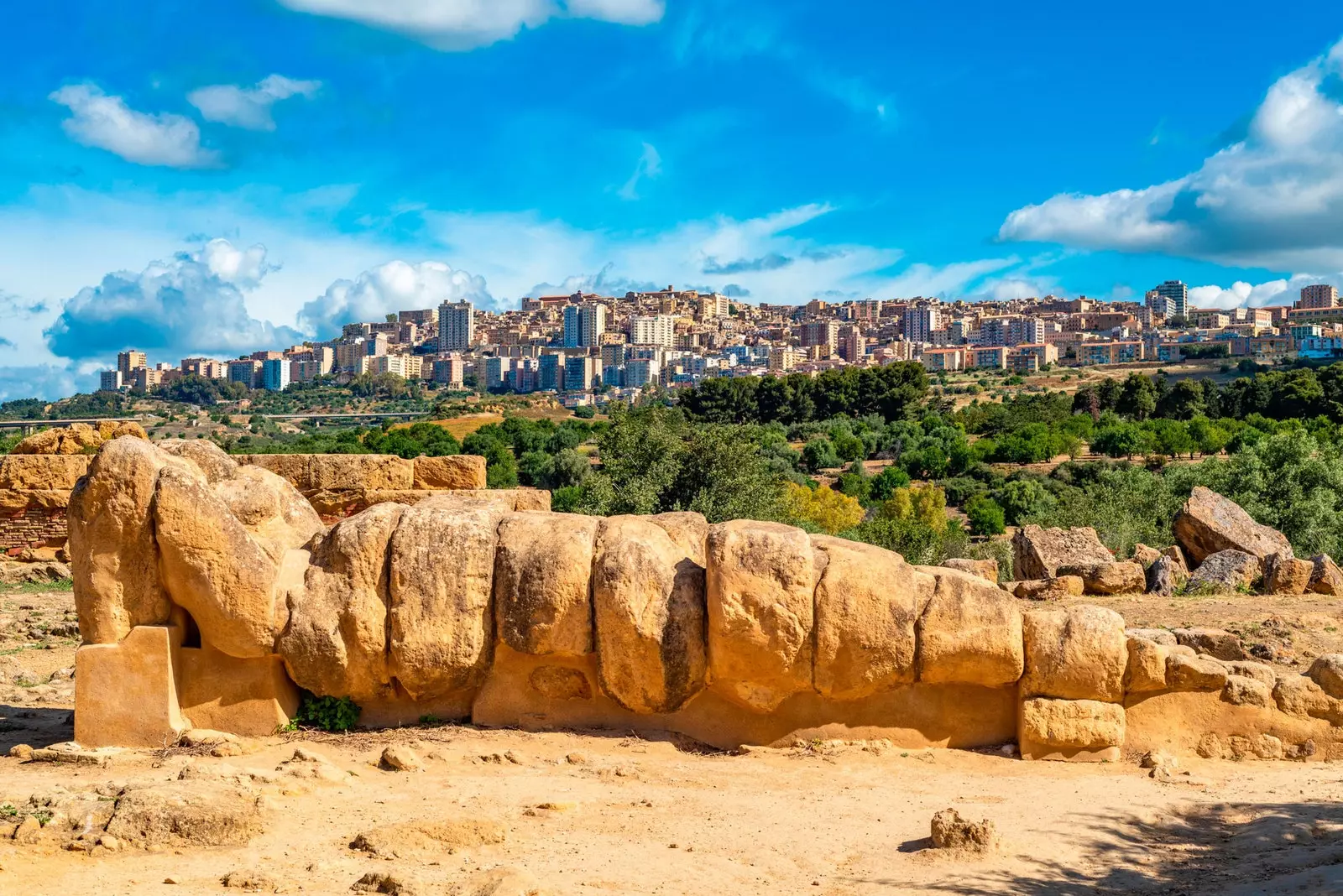
One of the colossal stone Atlanteans in the Temple of Olympian Zeus
We leave behind the gloomy gaze of the Atlanteans and enter a bustling city, whose streets smelled of cheese, oregano, sausage and truffles, brimming with color and life, where Latin, Greek and Phoenician were heard. we were in Agrigento, the city of the sons of Hercules, and everything was wealth.
The poor settlers who abandoned a homeland where there was no longer any sustenance, and took as their adoptive father the most divine of humans, had created an emporium in the heart of the Mediterranean. And over the rooftops, standing out on the top of a hill, contemplating our steps towards its columns and the beauty of Agrigento, it stood out the beautiful Temple of Concordia, the best preserved example of a Doric temple in Sicily.
As soon as our feet reached the bottom step of the temple, the teeming city that we had traversed to reach the promontory vanished. Ancient Agrigento blew away with the first gust of midday wind: it turned out to be sirocco, a southeasterly wind, and little by little everything turned coppery.
The Atlanteans collapsed, breaking apart, lying on the ground again, and There was nothing left but scrub and olive trees where a few seconds ago a rich city had throbbed.
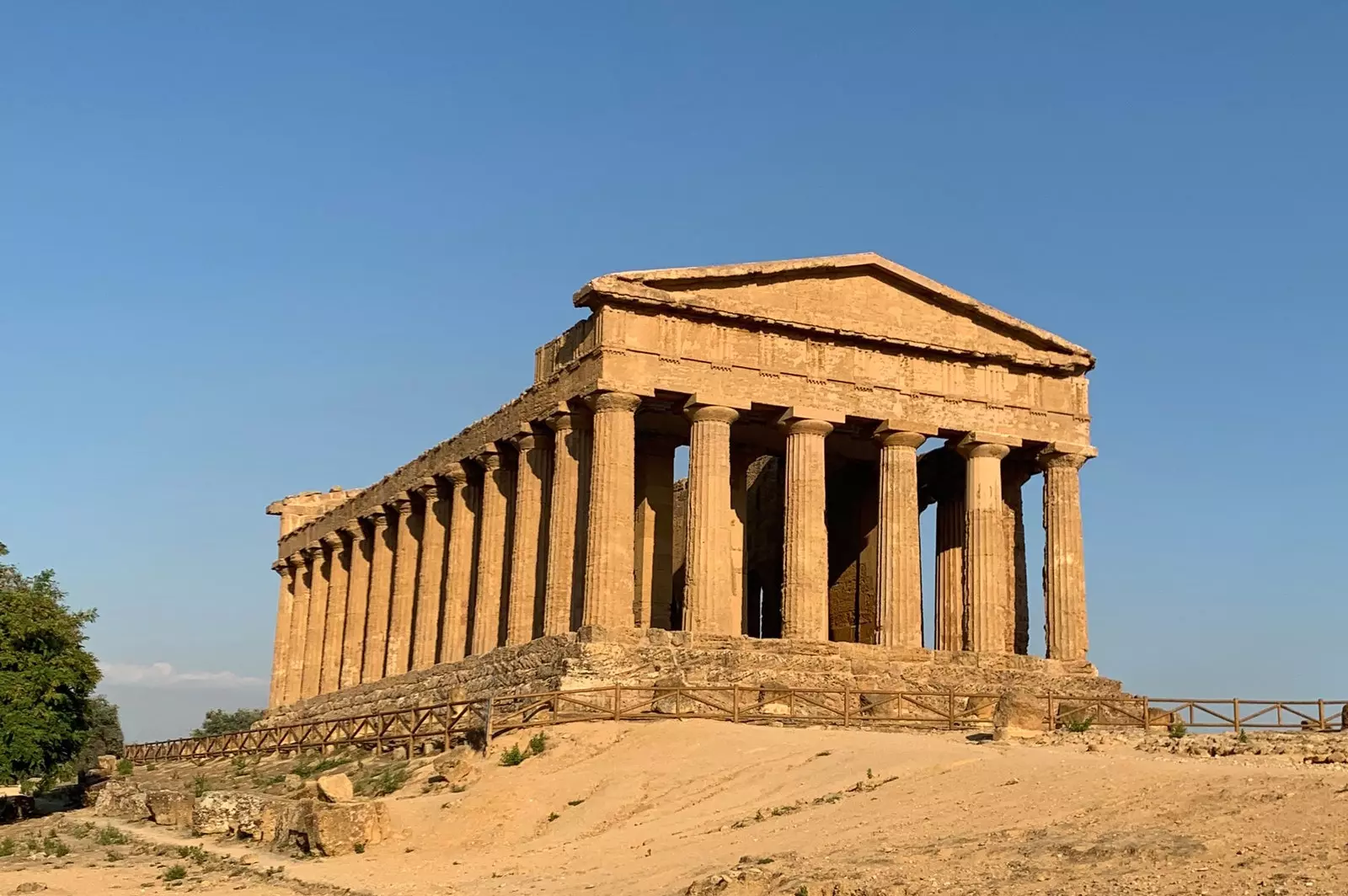
Temple of Concord
Seeking to escape the dust dragged by the sirocco, we leave the Temple of Concordia and its sweet harmony, and we close our eyes. When we opened them, the mirage experienced in the "valley of the temples" had given way to a not so idyllic reality: all around us we could once again hear the dry bleating of the Vespas and the rattle of the old Sicilian Fiats.
Wishing to return to the old Agrigento, I turned my eyes towards the captain of the ship, and asked him, desperate: “Where have the people we have seen gone? Is Agrigento just a dream?
The sea dog shook his head and pointed towards the brown city that seemed so unrelated to the Valley of the Temples, displaying a sad smile: “they are there, where no one can reach them: that is now Agrigento”.
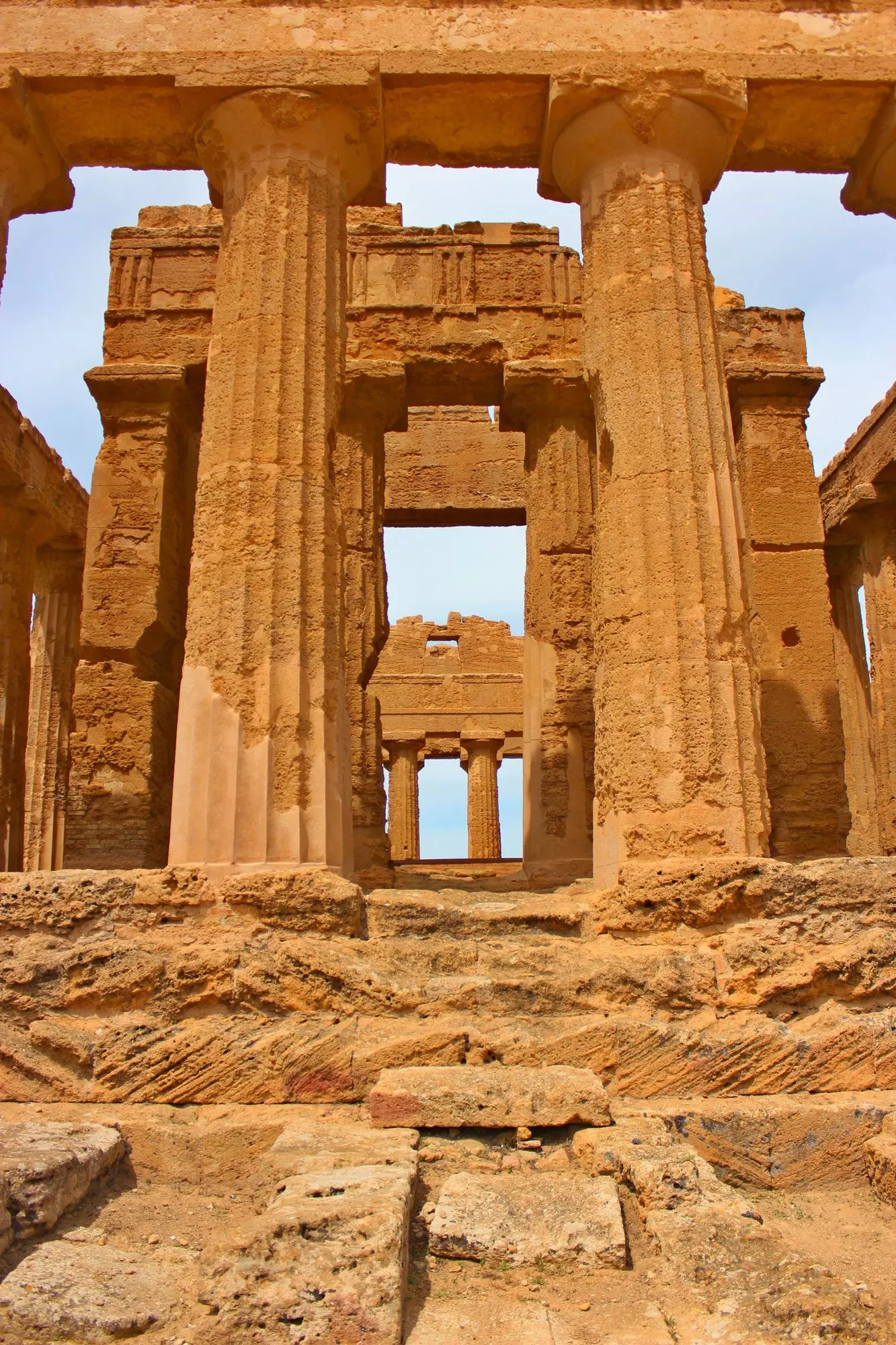
Is Agrigento just a dream?
Then I could hear the frantic creaking of the topsails of hundreds of sailboats, and I turned my eyes towards an invisible but close sea. From there came the pirates and Carthaginian, Roman, Muslim and Ottoman armies that had launched themselves on the riches of Agrigento, plundering it to its roots.
Empire after empire, like waves that devour a weak dune, the continuous enemies forced the inhabitants of the city to settle on the acropolis, the walled hill that is now the historic center of modern Agrigento. That is why the valley was empty, and the temples looked lonely and melancholic, waiting for the time when the city recovers its old life.
However, and fortunately, this does not seem close to happening. UNESCO has protected the Valley of the Temples from urban outrages, so common in our time.
However, the "new" Agrigento, where the inhabitants of the ancient city took refuge, lacks the charm of other cities with a medieval past, and does not shine in the beautiful Sicilian land. He seems to refuse to speak louder than the dead city he got fame from, the one that rests buried in the valley, guarded by the collapsed Atlanteans, in the shadow of the temples of Zeus, Hercules, Hera and Concordia.
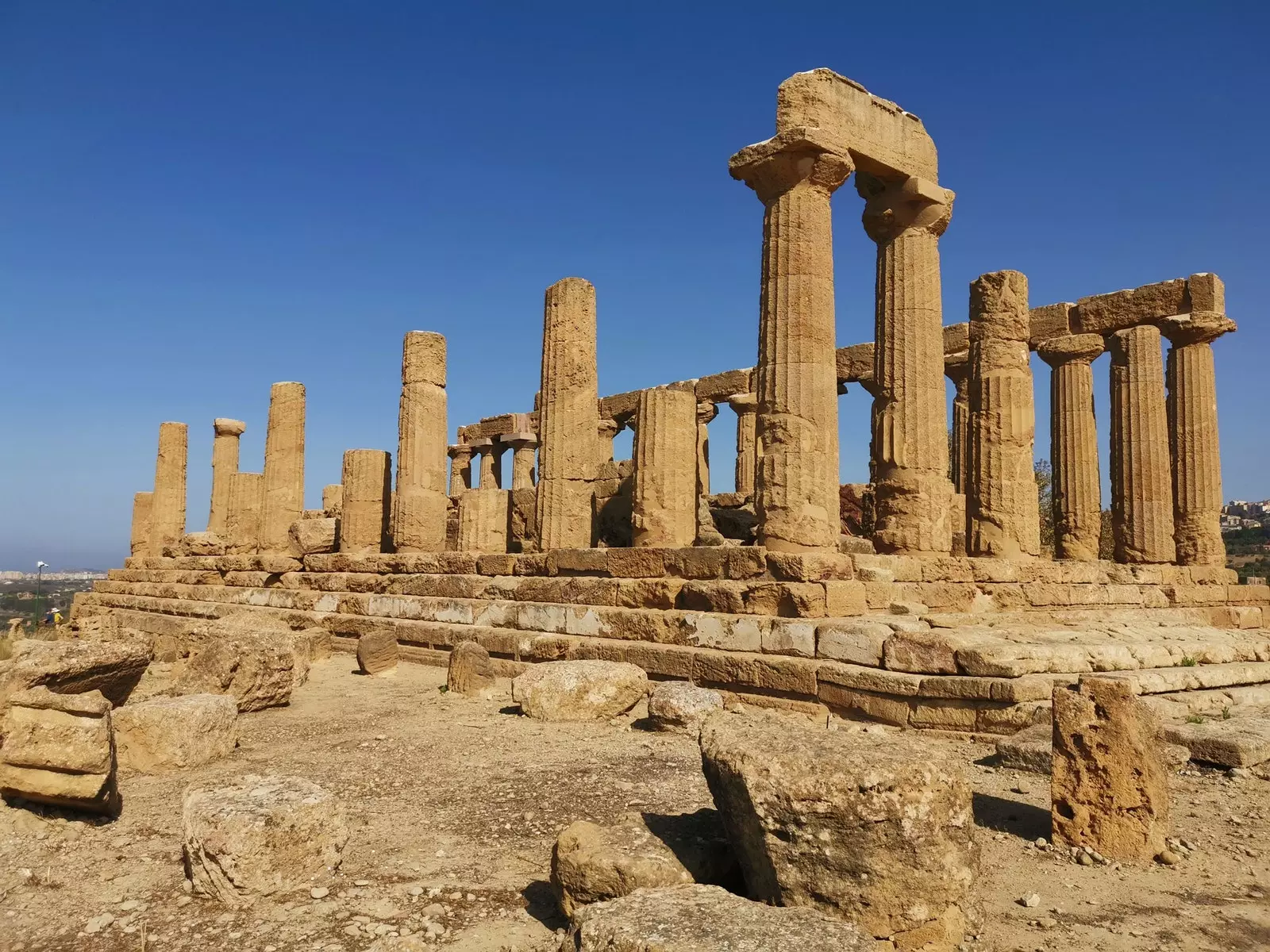
Temple of Hera
He earns our forgiveness for it: both cities, ancient and modern, are Agrigento. Among the ruins, there are no pasta alla norma dishes, the famous aubergine, ricotta and tomato sauce so typical of Sicily, no canoli overflowing with milk or pistachio meringue, or pizzerias where a non-wood oven is inconceivable.
The old Agrigento needs the new to keep breathing. Life, food, await us at the top of the hill: let us leave the valley for the temples.
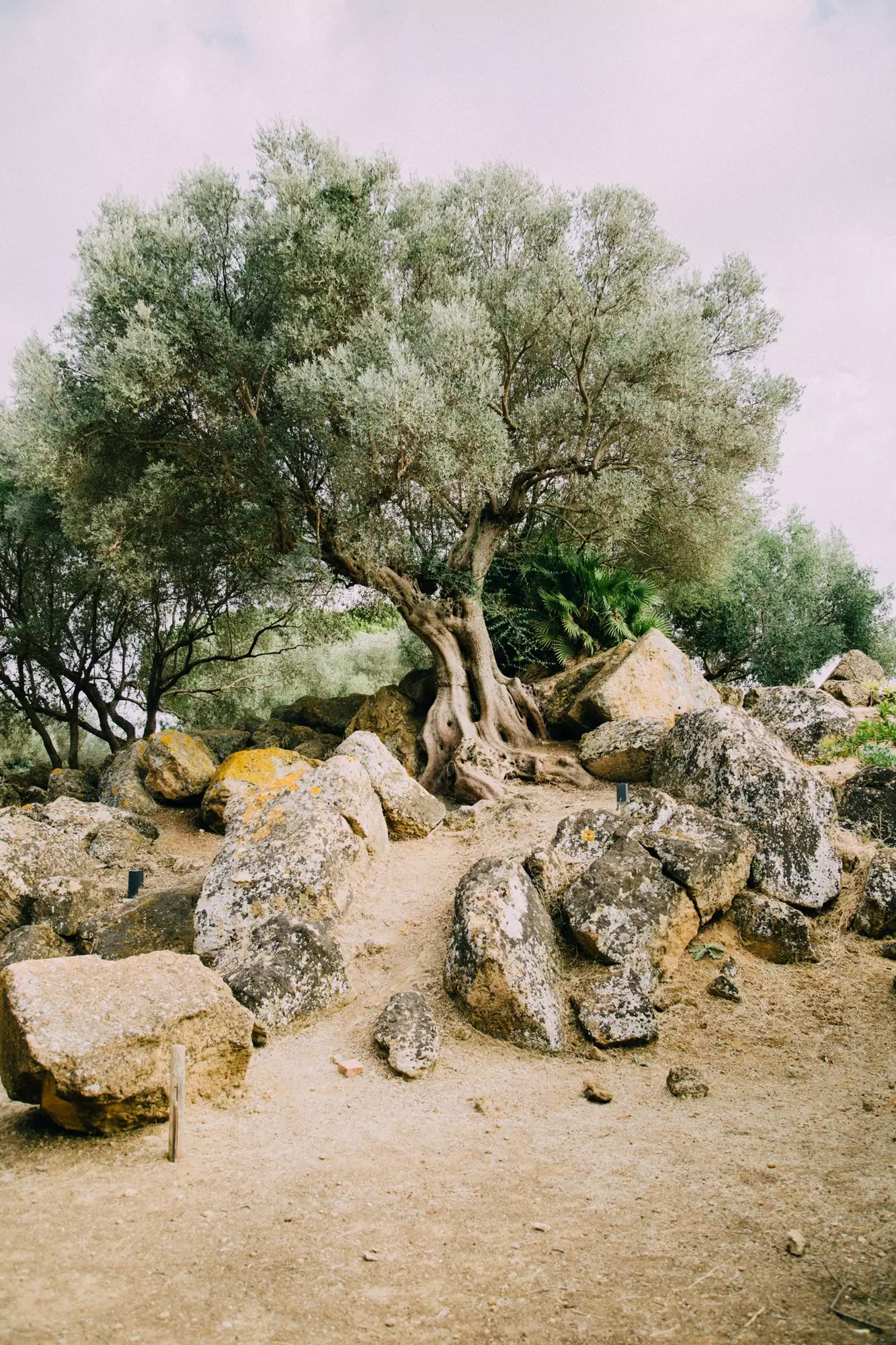
Valley of the Temples
